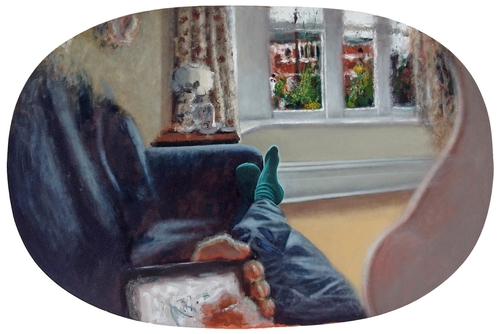

Linear perspective is a simple and elegant method of representing 3D space on a 2D plane. It was discovered by artists and architects in the fifteenth century and now underpins nearly all our imaging technologies, from cameras to computer graphics engines. Yet few people are aware of its limitations and the fact that artists have rarely used it because of them, or that several other nonlinear methods exist that can do a better job in conveying subjective visual experience. These other methods have a surprisingly rich history in art and mathematics and are increasingly relevant to those developing new forms of 3D rendering and computational photography. How to computationally model and apply these methods remains an important open research problem.
The workshop will explore this area of frontier research in depth and from several disciplinary angles and aims to foster research between computer graphics, art, and visual perception. A panel of experts from different fields will discuss various forms of artistically-inspired perspectives, the relationship between these perspectives and the human visual system, and the impact they are having on computer graphics and computational photography. An optional drawing exercise will help participants appreciate critical features of human visual experience and better understand some of the ideas that will be presented.
Schedule
| Time | Topic | Speaker |
| 1:30pm | Introduction | |
| 1:45pm | Projections in Computer Graphics [Slides] | Aaron Hertzmann |
| 2:15pm | Drawing Visual Perception [Slides] | Robert Pepperell |
| 2:45pm | PICTURES, Crafting & Beholding [Slides] | Jan J. Koenderink |
| 3:45pm | Group discussion / Q&A | All |
| 4pm | Optional drawing exercise | Robert Pepperell |
Speakers
Aaron Hertzmann is a Principal Scientist at Adobe and Affiliate Faculty at University of Washington. He received a BA in computer science and art/art history from Rice University in 1996, and a PhD in computer science from New York University in 2001. He was a Professor at University of Toronto for 10 years, and has also worked at Pixar Animation Studios and Microsoft Research. He has published over 100 papers in computer graphics, computer vision, machine learning, robotics, human-computer interaction, and art. He is an ACM Fellow and an IEEE Fellow.
Jan J. Koenderink is a Professor of Psychology at Utrecht University and at KU Leuven. He has written many influential papers on human and computer vision, along with the books "Solid Shape" and "Color for the Sciences." He is the recipient of many major awards, including an honorary doctorate from KU Leuven, the 2013 Azriel Rosenfeld Award for lifetime achievement in computer vision, and the Kurt-Koffka medal. He is a Fellow of the Royal Netherlands Academy of Arts and Sciences, and the Royal Flemish Academy of Belgium for Science and the Arts.
Robert Pepperell is Professor of Fine Art at Cardiff Metropolitan University, UK and a co-founder of Fovotec, a UK-based startup. A practising artist, he has published many scientific and philosophical works on the nature of consciousness, visual perception, neuroscience, art history and theory, and technology. Fovotec have developed a new form of "natural perspective" based on the structure of human vision and implemented it as a novel rendering process for real-time 3D graphics.
Related Readings